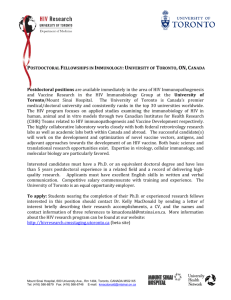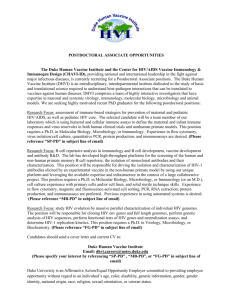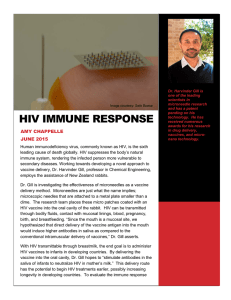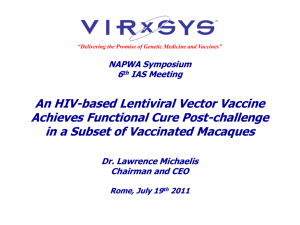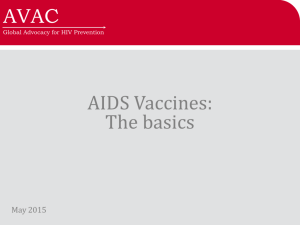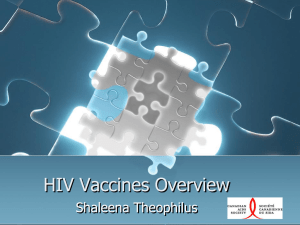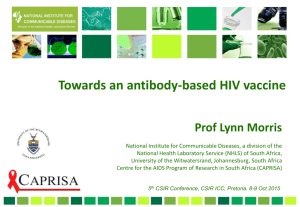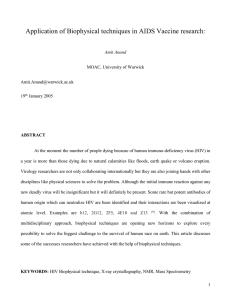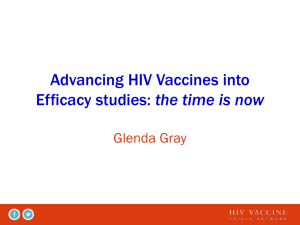New Frontiers in HIV Vaccine Development
advertisement
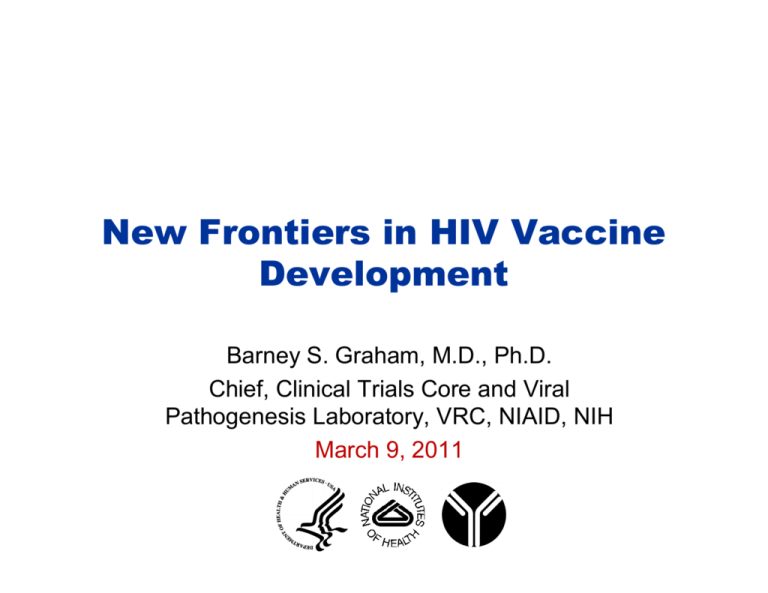
New Frontiers in HIV Vaccine Development Barney S. Graham, M.D., Ph.D. Chief, Clinical Trials Core and Viral Pathogenesis Laboratory, VRC, NIAID, NIH March 9, 2011 Impact of Licensed Vaccines Viral Disease Year of Peak US Prevalence Peak Number of Cases per Year in US Number of Annual US Cases in Modern Vaccine Era (2009) Diphtheria 1921 200,000 0 Hepatitis A 1971 59,606 2,585 (2008) Hepatitis B 1985 26,654 4,033 (2008) Measles 1958 – 1962 503,282 71 Mumps 1967 185,691 1,991 Pertussis 1934 265,269 17,000 Polio 1951 – 1954 16,316 0 Rubella 1966 – 1968 47,745 3 Smallpox 1900 – 1904 48,164 0 Source: CDC/MMWR, WHO Classical Vaccinology The response to natural infection provides the proof of concept HIV Vaccinology Biological Challenges for HIV Vaccine Development • Lack of natural immunity – No evidence of viral clearance and recovery from HIV infection – Evidence of superinfection • Genetic diversity – Antigen selection – Immune escape • Infection of immunologic “First Responders” – Infection of antigen presenting cells – Interference with antigen presentation – Rapid destruction of memory CD4+ T lymphocytes • Infection of immunoprivileged sites, sequestered virus, and latency • Difficult to induce neutralizing antibody • Imperfect animal models First Signal of Efficacy in HIV Vaccine Clinical Trials Human Efficacy Data are Always Pivotal 1st Evidence of ARV Efficacy Fischl M et al NEJM 1987 1st Evidence of HIV vaccine efficacy Rerks-Ngarm et al NEJM 2009 Iterative Research Process Discovery Preclinical Research & Development Clinical Research Does HIV have an Achilles heel? Zhou et al. Nature 2007; 445:732 Sites of Vulnerability on gp160 Schief WR et al. Curr Opin HIV AIDS. 2009;4:431 The Atomic Structure of VRC01 in Complex with HIV-1 gp120 Contact surface gp120 inner domain gp120 outer domain bridging sheet Chen et al. Science 2009; 326:1123 Wu et al. Science 2010; 329:856 Zhou et al. Science 2010; 329:811 HIV Vaccinology: Moving Forward Recent data and advancing technologies provide new hope that vaccine development is possible Reducing HIV acquisition is primary goal of vaccination Followup of RV144 Improved delivery vectors and modified antigens New study populations and novel trial designs Opportunity to define immune correlates Structure guided antigen development Findings enable development of vaccines for tuberculosis, malaria, influenza, respiratory syncytial virus, and biodefense agents Vaccine Research Center VRC.NIH.GOV 1 866 833-LIFE vaccines@nih.gov
